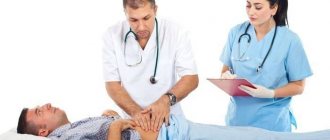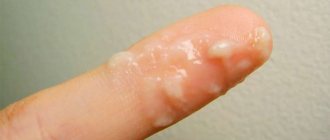Causes
Any representative of the fair sex can suffer from this gynecological disease. There is no specific route of infection by pathogenic microbes. There is no way to insure against the onset of illness. Inflammation of the appendages appears for many reasons:
- Hypothermia. Women should strictly avoid hypothermia in the genital area and lower abdomen. The most common cause of pathology in young girls is wearing inappropriate clothing during the cold season.
- Stress. In severe stressful situations, the immune system loses its ability to maintain the balance of internal microflora. Bacteria present in a woman’s genitals begin to multiply and spread uncontrollably.
- Lymphogenic, hematogenous route. An infection located elsewhere spreads through the lymphatic system or bloodstream. Finding a vulnerable spot in the mucous membrane of the uterus or its appendages, it begins to provoke adnexitis.
- Termination of pregnancy, surgical operations in the abdominal cavity. Any external intervention can cause inflammation. Damaged tissues become more susceptible to microbial attack. The remaining blood begins to decompose already on the second day, causing a severe imbalance of microflora and serious complications.
- Sexually transmitted infections, E. coli, poor personal hygiene.
List of the most common infectious agents, both harmful and opportunistic. Their entry and reproduction into the female reproductive system provokes the appearance of problems with the appendages and the development of associated health problems.
- Gonococcus. Provokes the most protracted types of disease. It is resistant to traditional treatment. Causes serious complications that penetrate deeply into inflammatory tissues.
- Chlamydia. A common bacterium causes salpingoophoritis in a third of cases. Has a secretive nature of existence. The parasite grows and develops inside living cells of the host. With illiterate therapy, only remission is achieved, and not its complete eradication. Its identification by cells of the immune system can only occur in the active phase.
- Mycoplasma. A microorganism without a cellular structure, like a virus, but growing and multiplying regardless of its presence in the host’s body. It spreads in the mucous membranes, gradually affecting an increasingly larger area. Transfers infection to neighboring tissues. Not only bilateral adnexitis appears, but also damage to the peritoneum, abdominal organs, gastrointestinal tract, and hormonal disorders.
- Peptococci. Conditionally pathogenic bacteria. They exist inside the human body, normally bringing benefits to it. Under unfavorable conditions, entering into associations with other microorganisms, they can undermine the health of their owner and provoke complex inflammation.
There is no need to torment yourself with an excessive desire for sterility, trying to avoid the appearance of salpingoophoritis. It can appear for no apparent reason. The human internal environment is filled with various types of bacteria. When in balance in the body, they bring benefits to life. But at the slightest malfunction, these bacteria can provoke the appearance of various disorders, including salpingoophoritis.
Causes of adnexitis
As we have already noted, the main causes of adnexitis, which cause the inflammatory process, are infections that affect both men and women: chlamydia ( chlamydia ), mycoplasma ( mycoplasmosis ), ureaplasma .
There are many ways for infection to enter the fallopian tubes, but, sadly, most often infection occurs during medical gynecological procedures: abortion , insertion of intrauterine contraceptives. However, sexual transmission of infections during sexual contact cannot be discounted.
Infections do not immediately enter the fallopian tubes, but onto the vaginal mucosa. From there it can already be distributed among the appendages, for which certain conditions are required. In addition, not every woman gets an infection in the vagina that inevitably leads to adnexitis.
In this regard, we can talk about indirect causes of adnexitis, that is, factors that increase the susceptibility of the female body to the development of infections. These factors include common lifestyle problems of a modern woman: frequent stress, lack of personal hygiene, hypothermia , bad habits and other actions that reduce immunity.
Symptoms of adnexitis
Inflammation of the appendages is very often not diagnosed due to the absence of obvious signs. Diseases of the reproductive system can masquerade as temporary health conditions associated with a busy work schedule and wearing uncomfortable clothes. Ailments, the cause of which has been misinterpreted, are suppressed by general medications (antipyretics, painkillers). That is why salpingo-oophoritis develops further, sometimes turning into an acute state, sometimes persisting and progressing into a chronic state.
Acute course of the disease
The developing inflammatory process provokes the appearance of symptoms similar to other disorders. But the source of inflammation and its localization can be identified by a combination of signs:
- Temperature increase. For a long time, the indicators remain within 38-38.5 degrees.
- A general malaise appears, a headache, muscles cramp, the body sweats profusely, and the patient feels “freezing.”
- Cutting pain in the lower abdomen. They intensify with a full intestine or bladder, intense sexual intercourse, wearing tight clothing, and sudden movements.
- Piercing pain when suddenly sitting down in a chair or on a chair. It feels like a deep puncture with a knitting needle and goes right to the area where the inflammatory process is taking place.
- The pain spreads to the lumbar and tailbone area even in the absence of pressure on them.
- When palpating the abdomen, the patient has a feeling of tearing of the internal organs (inflamed appendages and ligaments).
- In advanced forms of the disease, purulent discharge is possible.
- Urination is impaired.
It is necessary to comply with all the rules prescribed by the doctor. You should continue taking it even if the symptoms have subsided. Untreated salpingoophoritis is dangerous due to its degeneration, transition to a secretive existence.
Symptoms of chronic disease
The lack of adequate therapy provokes the disease to become chronic. It manifests itself with less severe symptoms. But when unfavorable conditions occur, the condition transforms into intense. Signs of hidden salpingoophoritis:
- Increased pain in the lower abdomen. The ailments have a wave-like manifestation.
- Periodic increase in body temperature to subfebrile. It stays within 37.5-38 degrees for five days.
- Vaginal discharge becomes mucous, purulent, and acquires an unpleasant odor.
- Menstrual cycle disorders: long menstruation with a short cycle; discharge without periodicity; extreme pain during menstruation; scanty menstrual flow with a long cycle.
- Libido decreases, pain appears during sexual intercourse.
- Nearby organs suffer from the proximity of the source of infection. Cystitis and pyelonephritis often manifest in the urinary system. The gastrointestinal tract suffers from colitis and dysbiosis.
- The affected internal secretion organs are not able to fully perform their work. The hormonal balance is disrupted, and the woman’s mental state loses stability.
Getting rid of chronic disease of the appendages is very difficult. It is much easier to eradicate a disease by diagnosing its presence in time. Unscrupulous attitude towards carrying out procedures, failure to complete the course, violation of the regime lead to the development of a more stable form and its severe consequences.
How to treat inflammation of the appendages
Treatment of inflammation of the appendages in women depends on the strength of the inflammatory process and the nature of the infection. If the cause of the disease is a pathogenic microorganism (bacterium), then antibacterial drugs (antibiotics) are needed. If the cause of the infection is a virus, then antiviral measures and agents are needed - specific antiviral drugs and immunomodulators.
Acute stage: treating the causative agent infection
More often, the causative agent of the inflammatory process in the female genital organs is pathogenic bacteria (anaerobes), the reproduction and vital activity of which occurs in an oxygen-free environment. Antibacterial drugs are prescribed for their treatment. The choice of antibiotic is determined by the type of pathogen. Antibacterial agents have a wide spectrum of action, but are unable to equally counteract all pathogens. Therefore, for effective treatment, the pathogen is determined by taking a smear from the vaginal flora.
If it is impossible to inoculate the pathogen, then antibiotics of the widest and most general spectrum of action are prescribed. These are drugs of the cephalosporin and penicillin groups (Ceftriaxone, Amoxiclav). They may also prescribe milder antibacterial agents - Erythromycin, Metronidazole. For minor inflammation, they are prescribed in tablet form. For severe adnexitis - in the form of injections (shots), which are given under the supervision of a doctor in a hospital.
What antibiotics are prescribed for home treatment for inflammation of the appendages and ovaries:
- Macrolides - Azithromycins (Summamed), Erythromycins (international version - Clindamycins). These tablets for inflammation of the appendages are most often prescribed for the treatment of adnexitis. They are considered the least toxic antibacterial drugs with a minimum of side effects and contraindications.
- Fluoroquinalines – Norfloxacin, Ofloxocin, Lomefloxacin. They represent one of the latest generations of antibacterial drugs and are almost non-addictive.
- Nitromidazoles - Metronidazole, Ornidazole, Ternidazole. This group acts against nitro group pathogens.
_
Note: often two types of antibiotics are prescribed simultaneously for the treatment of genitourinary diseases. One is against anaerobic bacteria (those that reproduce in an oxygen-free environment). And the second is against aerobes (reproducing in the presence of oxygen).
Remission stage: treating the remnants of the inflammatory process
After limiting the growth and development of the pathogen, a period of remission begins. It is characterized by the presence of residual signs of inflammation in the mucosal epithelial cells. That is, there is still inflammation, but the causative agent is no longer there.
Often, many women end treatment at this stage, believing that the residual effects will go away on their own. This is indeed possible, but only in a healthy female body with a strong immune system. Often the opposite happens. Residual inflammation becomes the basis for re-infection and relapse (recurrence) of the disease. Therefore, treatment must be completed. What is prescribed during the remission stage?
For final recovery, measures are prescribed to resolve the source of inflammation. They speed up the elimination of toxins. As a rule, those agents are used that stimulate blood circulation inside the abdominal cavity and accelerate local blood flow in the area where the ovaries and fallopian tubes (appendages) are located.
These include:
- Physiotherapy (magnetic therapy, electrophoresis).
- Warming and compresses.
- Paraffin treatment.
- Mud therapy.
- Massage – special gynecological, on the lower back and lower abdomen.
Treatment with mineral waters at a balneological resort is also prescribed.
Remedies to boost immunity
In addition to “direct action” drugs, which are directed directly against the causative agent of the infection, the treatment of adnexitis uses means and drugs to boost immunity. They are also necessarily used in the treatment of viral inflammation caused by foreign particles (for example, in the treatment of genital herpes). Immunity boosters include:
- Vitamin-mineral complexes are necessary to ensure active protective reactions. They are prescribed for any diseases, infections, inflammations.
- Prebiotics are drugs for normalizing the bacterial flora, providing local immunity to the internal cavity of the vagina and intestines. Must be prescribed during treatment with antibacterial substances.
- Specific drugs to stimulate the immune system - antiviral drugs, immunomodulators. They are necessarily prescribed for a viral infection. For example, against herpes - tablets and ointments with acyclovir, famvir, panavir. And for any viral infections - suppositories with interferon.
Often, treatment with absorbable drugs and medications for immunity are prescribed from the first days of illness. If the inflammation is caused by a bacterial pathogen, then immunity agents are an additional treatment that shortens the duration of antibacterial therapy. In case of a viral pathogen, immunostimulants provide the main treatment for the disease.
Treatment with antibiotics lasts from 7 to 10 days. The duration of treatment with vitamins, prebiotics, as well as the use of physiotherapy is 3-4 weeks (almost a month).
_
Note: analgesics are also prescribed for severe pain.
Treatment of chronic inflammation of the appendages varies in duration and uses various drugs - tablets, injections, vaginal suppositories, as well as physiotherapy. Vaginal suppositories are the most convenient for treatment at home and are very effective.
Diagnostics
The primary indicator is complaints of pain in the area of the uterine appendages. A history of sexually transmitted infections, abortions, abdominal surgeries, or childbirth confirms the doctor’s suspicion of salpingoophoritis. Researches are assigned:
- Smears from the vagina and cervix indicate the presence of markers of bacterial and viral infections.
- Ultrasound shows growths, changes in the structure of the inner surface of the uterus and fallopian tubes. But ultrasound research does not give a clear picture of the process.
- General blood test.
The best diagnostic method for identifying adnexitis is laparoscopy. Through small punctures, tracking devices and a manipulator are inserted into the abdominal space to take samples. This reduces trauma and does not require general anesthesia.
Complications
Due to disruption of the normal functioning of the tubes and ovaries caused by inflammatory processes, there is a danger of developing infertility. This pathology is due to the possibility of formation of adhesions in the fallopian tubes in the pelvis. Due to the presence of adhesions, the fertilized egg cannot leave the tube and enter the uterus, making pregnancy impossible.
Inflammatory processes in the ovaries and tubes can lead to the development of an ectopic pregnancy. In this case, the fertilized egg is not implanted in the uterine cavity, but in the tube or on the surface of the ovary. After frequent inflammation of the appendages, as well as in cases where the disease has not been completely cured, the likelihood of developing an ectopic pregnancy increases several times.
In addition to problems with fertilizing the egg and successfully bearing the baby, there are other dangerous consequences of inflammation of the appendages. There is also a risk of cyclic and acyclic uterine bleeding or, conversely, amenorrhea. With salpingoophoritis, purulent processes may occur in the ovaries and fallopian tubes. They are not only very painful, but can also be dangerous to the health and even life of the patient. If purulent exudate penetrates through the inflamed organ into the abdominal cavity, there is a possibility of developing peritonitis - infection of the peritoneum.
In addition to these conditions, the consequences of salpingoophoritis include hormonal imbalances, decreased body resistance, sleep and performance disorders, nervous disorders, including depression.
Treatment of adnexitis
When turning to professional doctors, even with advanced adnexitis, all patients noticed an improvement in their condition within two months. Neglecting the basic rule of medicine, patients stopped taking medications, allowing the infection to strengthen. Each form of manifestation of this gynecological disease has its own treatment characteristics. During the acute phase, it is advisable to place the patient in a hospital setting. Getting rid of the chronic type requires consistency, perseverance and strict adherence to the doctor’s instructions.
Measures for acute form
Really effective therapy for salpingoophoritis is carried out in a hospital setting. This way, the patient will be provided with the maximum possible peace, appropriate care, proper nutrition, and monitoring of tests. To stop the destructive process, anti-inflammatory drugs are prescribed:
- Indomethacin;
- Diclofenac;
- Longidaza.
The drugs have a restorative effect on connective tissues damaged by adhesions and inflammation. But the spread of infection will be stopped by antimicrobial drugs and antibiotics that destroy pathogenic microflora:
- Metronidazole;
- Azithromycin;
- Ceftriaxone;
- Tsiprolet;
- Sumamed;
- Amoxiclav;
- Genferon (immunomodulatory effect);
- Digital
At an advanced stage, when suppuration occurs, surgery is prescribed. During this period, the abscess is opened, the internal cavity is washed from residual pus, and sanitation is carried out. Modern clinics use laparoscopy for this purpose.
Measures for chronic form
The primary task in getting rid of salpingo-oophoritis is to relieve the acute period with the help of injections, tablets, and suppositories. The indolent form of the disease of the appendages is subject to less intensive therapy:
- Autohemotherapy. Injection of the patient’s own blood, taken from the venous bed, into the gluteal muscle. Helps to activate the immune system in cases where the disease is sluggish, often recurrent.
- Physiotherapy. Ultraviolet radiation is used to increase general immunity, electrophoresis with iodine, potassium, zinc, magnesium.
- Magnetotherapy. Good results in the treatment of chronic adnexitis can be achieved using the Almag apparatus. It relieves inflammation and eliminates pain.
Associated methods of recovery are: vitaminization, introduction of a proper diet, and strengthening physical exercises. To establish reproductive function, hormonal therapy is used in some cases.
What are appendages
The appendages in women are paired organs of the reproductive system that are located in the lower part of the small pelvis. They include 2 ovaries, fallopian tubes. The latter have an average length of 10 cm and a lumen diameter of 2-4 mm. The fallopian tubes connect the ovarian tissues and the cavity of the reproductive organ - the uterus.
Under conditions of stable functioning of the female reproductive system, the appendages are completely sterile, and their tissues and the surface of the mucous membrane do not contain pathogenic microflora.
In the event of the development of a bacterial imbalance, infection of the genital organs with infectious microorganisms, inflammation increases in the appendages, which reduces or completely stops their functional activity.
Healthy ovaries and fallopian tubes do not cause pain or other discomfort. Disturbances in the functioning of these organs of the reproductive system cause the appearance of painful symptoms.
Folk remedies
Treatment of salpingoophoritis at home is effective only in cases of using medications prescribed by a doctor. But folk remedies can also alleviate a woman’s condition, relieve exacerbation, and slow down the development of the disease.
- Douching with a decoction of chamomile, sweet clover, sage, and horsetail. These herbs have a local antiseptic and anti-inflammatory effect. Decoctions can be made from individual items or as a collection. Consumption of dry material: 1 tablespoon per glass of water.
- Borovaya uterus inside. A wild herb that has a beneficial effect on a woman’s reproductive function. Anti-inflammatory, immunomodulatory, antimicrobial effects support the body.
The herb is always brewed in boiling water and simmered over low heat for 15 minutes. Cools naturally. Strained. For douching for adnexitis, “hot” douching is used. The temperature of the liquid in them is higher than body temperature, but should not exceed 42 degrees.
Traditional methods of treatment
Treatment with traditional methods should not replace medication. It can be used as a supplement to relieve unpleasant symptoms. But this should be done after consulting a doctor.
Wormwood . To do this, you need to take 2 liters of water, boil it, and add a handful of wormwood herb. Mix everything and remove from heat. Place the container with the grass on the floor and squat over the hot steam for 20 minutes. After six treatments, symptoms become less pronounced.
Ortilia one-sided, or ramishia . This herb is used to treat many diseases of the female genital organs. To do this you need to chop 1 tbsp. herbs, and pour 1 cup of boiling water over it. Let it brew for two hours, then strain everything, and take 1/3 cup orally before meals.
Alcohol tincture from orthalia . To do this you will need 50 grams of grass and 0.5 liters of alcohol, mix everything. Let it brew in a dark place for two weeks, then strain. The infusion should be taken 3 times a day, 35 drops before meals.
Douching
The douching procedure is carried out in the bathroom. To do this you need:
- Find a comfortable position with your legs up against the wall.
- Relax, otherwise it will be difficult to enter the vagina.
- Insert the syringe with the medicine so as not to damage anything. For this, 200-300 ml of decoction will be enough.
- All movements must be careful; liquid must be poured into the vagina slowly, otherwise it may enter the uterus.
- It is best to douche in the morning and evening every other day until the condition improves.
Hypoallergenic diet for inflammation of the appendages
A diet for adnexitis is prescribed to each patient. Thanks to it, the body increases protective functions and improves metabolic processes in areas of inflammation. A hypoallergenic diet involves avoiding sweets, eggs, salt, mushrooms and carbohydrates. The patient should consume no more than 100 grams per day. proteins, 70 gr. – fat, 300 gr. – carbohydrates. The approximate kcal ratio is about 2300. Food should be boiled or steamed.
Diet for adnexitis
Nutrition for an inflammatory disease should place minimal stress on the digestive tract. A correct diet is one in which the following rules are followed:
- It is not allowed to consume alcohol or other drugs during treatment with medications prescribed by a doctor.
- You should avoid fried and salty foods.
- Fatty dishes and foods rich in seasonings negatively affect blood composition and make recovery difficult.
- Drinking plenty of fluids is necessary. This speeds up metabolism and promotes rapid removal of toxins and drugs from the body.
- The basis of the diet should be lean meats, steamed or boiled, greens, and cereals.
- Fruits and vegetables rich in vitamin C strengthen the immune system. Rose hips, sweet peppers, kiwi, sea buckthorn, citrus fruits, and rowan are consumed fresh. Ascorbic acid does not withstand high temperatures and disintegrates when boiled.
- To quickly restore normal microflora destroyed by antibiotic therapy, it is recommended to consume fermented milk products.
Proper nutrition will help not only get rid of the disease, but also prevent its occurrence. The introduction of healthy lifestyle habits has a preventive value; it will protect against many problems and deviations in the future.
Causes of organ diseases
Diseases of the ovaries and fallopian tubes develop as a result of systematic or short-term exposure to negative factors.
The following are the most common causes of the pathological condition of the appendages in women:
- penetration into the cavity of the fallopian tubes or connective tissue of the ovaries of dangerous strains of bacterial infection in the form of Staphylococcus aureus, Escherichia coli, streptococcus, tuberculosis, fungal microorganisms, gonococcus (possible hematogenous infection along with the blood stream, as well as vaginal entry of pathogenic microflora);
- maintaining a promiscuous sex life with sexual contacts with several partners;
- seasonal decrease in the body's protective functions, or caused by chronic fatigue;
- hypothermia of the body resulting from prolonged exposure to damp or frosty weather (in this case, inflammation of the appendages does not have an infectious etiology);
- negative consequences and complications that developed after surgery on the organs of the reproductive system;
- previous criminal abortion;
- the presence of concomitant diseases of the genital organs in the form of bacterial vulvitis or vaginitis;
- abuse of diets that provide for restrictions on the consumption of certain foods necessary for the normal functioning of the body (fish, meat, cereals, dairy products);
- heavy physical activity associated with moving goods;
- infection of the reproductive system with sexually transmitted infections;
- daily stressful situations and psycho-emotional stress.
The causes of diseases of the appendages are determined based on the results of a diagnostic examination. Based on the information received, a therapeutic course is formed and medications are selected.
Consequences of the disease
Adnexitis is a general name that includes a wide variety of additional diagnoses. Depending on the location of the disease process, the degree of its development, and the damage it causes to the woman’s health, the following are distinguished:
- Apoplexy of the ovary. Damage to the ovarian wall. The infection “corrodes” the thin shell, threatening to rupture at the slightest strain.
- Pelvioperitonitis. Damage to the peritoneum. This condition is life-threatening, since its development poses a risk of extensive infection and sepsis.
- Endometritis. Inflammation of the internal cavity of the uterus.
- Adenomyosis. Benign growth of the walls of the uterus. The endometrial mucosa begins to thicken and grow into the deeper layers of the muscle walls. This makes conception impossible and increases pain during menstruation.
- Colpitis. Vaginal infection.
- Oophoritis. Inflammation of the ovaries, disrupting their functionality and structure. The condition threatens to rupture the membranes.
- Parametritis. Disorders that occur in connective tissue. Indicates the spread of infection.
- Salpingitis. The pathological process occurs directly in the pipes. Threatens obstruction, secondary infertility.
- Endometriosis. Proliferation of mucous membranes.
- Spikes. Violations of tissue integrity shrink, heal, and scar.
Each diagnosis has a detrimental effect on the patient’s future health. The mucous membranes of the reproductive system acquire an uneven structure and an uneven surface. The lumens of the pipes narrow and become unable to perform their functions.
Symptoms
Adnexitis can develop in several phases, the main of which are considered to be chronic and acute forms with frequent relapses and a protracted course. The following symptoms are characteristic of the subacute and acute forms of salpingoophoritis:
- chills, fever, body temperature may exceed 38 degrees;
- the presence of purulent discharge;
- sweating;
- cramping, severe pain in the sacrum and lower abdomen;
- symptoms of general intoxication (headache, muscle pain);
- the presence of pain when pressing on the abdomen;
- tense muscles in the abdominal area;
- difficulty urinating.
The chronic form of adnexitis, as a rule, is a complication of the acute form of the disease. The main symptoms of the chronic form of salpingoophoritis:
- dull, aching pain in the sacrum and abdominal area;
- the presence of pain during defecation and intimacy;
- menstrual irregularities;
- mucopurulent discharge;
- dysmenorrhea - severe pain during menstruation;
- during an exacerbation, body temperature can reach 38 degrees.
Prevention
It is always easier to protect yourself than to cure any serious disease. This disease poisons the lives of women at their most beautiful, childbearing age. In order to avoid the onset of salpingoophoritis, it is necessary:
- Avoid hypothermia from childhood. Don't sit in the cold. Wear clothes appropriate for the weather.
- Observe personal hygiene rules.
- Pay attention to your health. Periodic visits to the gynecologist with tests and examinations in the chair.
- Exclusion of casual sexual relations.
- If an unwanted pregnancy occurs, do not waste time. It is better to have a medical abortion or vacuum aspiration. During these manipulations, no injury is caused to the internal tissues of the uterus.
The best way to get rid of painful diseases is to prevent their occurrence. Preventing the onset of adnexitis will protect you from pain, inconvenience, problems with conceiving and bearing a desired child, and damage caused by antibiotic treatment.
Sex during inflammation of the appendages: is intimacy acceptable during treatment?
During the acute phase of the disease, it will not occur to the patient to have sex, since sexual intercourse increases the pain caused by the inflammatory process. However, once the symptoms of the disease subside, some women decide that they can resume sexual activity. In fact, this cannot be done until complete recovery.
If we are talking about a chronic form of the disease, then before resuming sexual activity it is recommended to consult a gynecologist about this.
Causes of the inflammatory process
Inflammation in the uterine appendages is provoked by both pathogenic and conditionally pathogenic microorganisms. Certain factors make them pathogenic and contribute to the appearance of symptoms of the disease. The infection enters the appendages as follows:
- from the vagina and cervix;
- through lymphatic and blood vessels;
- from other organs in which the inflammatory process occurs - the sigmoid colon, appendix.
Why do the appendages hurt? This occurs due to the inflammatory process, which is caused by the following factors:
- stress, hypothermia;
- multiple sexual partners;
- childbirth with complications;
- appendectomy;
- weakened immunity caused by various infections and diseases - HIV infection, diabetes mellitus and others;
- medical procedures in the uterine cavity, such as abortion.
Treatment of the disease
If the appendages hurt, treatment should be started in a timely manner. Usually the patient is sent to a hospital, where she is first prescribed a diet that excludes the consumption of salt, carbohydrates and pepper. In case of severe pain, the patient should stay in bed in the first days. Pain and inflammation are well relieved by cold, so the doctor may also recommend applying a cold compress to the lower abdomen.
Drug treatment of inflammation of the appendages begins with taking antibiotics. Since the disease occurs due to the action of different groups of microorganisms, several types of such drugs are usually prescribed.
Thus, treatment is carried out with the following antibacterial agents:
- penicillins (“Amoxiclav”);
- macrolides (“Erythromycin”);
- cephalosporins (“Ceftriaxone”);
- nitromidazole derivatives (“Metronidazole”);
- antifungal drugs (Diflucan, Nystatin).
The doctor may prescribe other antibiotics, but they must have a positive effect on the flora, which usually lives in an oxygen environment. In the first three days, antibiotics are administered using injections, after which the patient begins to take pills and the drug dose is reduced. The effect of treatment occurs already in the first days after its start. But if taking antibiotics does not bring the desired result, then surgical intervention is possible.
In addition to these drugs, treatment in a hospital is carried out using intravenous infusions of saline solutions, glucose, hemodez and other medications. To relieve pain and reduce inflammation, the patient is recommended to take anti-inflammatory non-steroidal drugs in the form of tablets. These include Ibuprofen, Diclofenac, Ketarol and other drugs.
As soon as the acute form of inflammation subsides, procedures such as electrophoresis with lidase or iodine, pulsed high-frequency currents, and ultrasound are prescribed.
Anti-inflammatory drugs
Inflammation of the ovaries in women is accompanied by various unpleasant symptoms. In this case, anti-inflammatory drugs will come to the rescue. Preference is given to the rectal and vaginal form of release of drugs that have antibacterial, antiviral and antifungal effects.
To relieve pain, you can use pain-relieving suppositories, for example, Diclofenac
Rectal suppositories called Indomethacin are often prescribed. The drug has an analgesic effect and quickly relieves the inflammatory process. Despite the effectiveness of the drug, its use can cause side symptoms: nausea, dizziness, diarrhea, increased anxiety, etc.
The drug Diclofenac is often used as an analogue. Contraindications to the use of the drug are presented only in the form of an increased tendency to hypertension, and side effects do not occur at all. Even despite these advantages, Diclofenac is significantly inferior in effectiveness to Indomethacin.
Another medicine is Movalis in the form of suppositories, which is a non-steroidal anti-inflammatory drug. Effective vaginal suppositories used for oophoritis are Klion D, Terzhinan, Betadine. Only a specialist should prescribe them, because there are many contraindications to their use.
When is surgery necessary?
If conservative treatment does not bring the desired recovery, surgery is performed. Also, surgical intervention is necessary in case of intractable pain syndrome, with the development of peritonitis due to rupture of the abscess capsule and the threat of abscess breakthrough, with intestinal obstruction.
In the above situations, the operation is performed urgently. Many gynecological specialists agree that first of all it is necessary to preserve the appendages completely or part of them, and, as a result, women’s health (especially in young women). For this reason, radical surgery is performed in extreme cases.
To avoid the need for surgical intervention, it is important to identify the disease at the initial stage, when the chances of a complete recovery using conservative techniques are quite high.
Antibiotics
Only a specialist can determine how to treat inflammation of the ovaries.
As a rule, antibiotics are first prescribed, which help to quickly suppress the inflammatory process. Such medications should be taken only in accordance with the dosage prescribed by the doctor.
Which group of drugs is needed is determined based on the results of a comprehensive diagnosis. To do this, a blood test, gynecological ultrasound, and a test are performed that shows the type of pathogenic microorganism that caused the inflammation. An analysis is also carried out to determine the sensitivity of the pathogen to various types of antibacterial drugs.
It is prohibited to prescribe medications on your own, otherwise you can cause the disease to transition from acute to chronic.
In the treatment of the inflammatory process, drugs of the following groups are used:
- aminoglycosides, which help stop the development of gram-negative bacteria that have increased sensitivity to antibiotics of other groups;
- tetracyclines, which help inhibit the development of foreign cells in the body;
- penicillins, which are allowed to be used even during pregnancy;
- cephalosporins, which help suppress the synthesis of cells of pathogenic microorganisms, have a detrimental effect on both gram-positive and gram-negative bacteria.
In most cases, antibiotics such as Amoxicillin, Cefazolin, Gentamicin, Ampicillin are used to stop the inflammatory process.
Where are they located?
The epididymis is located between the ovary and the end of the fallopian tube. It is possible to determine their location even more precisely: between the peritoneum of the uterus (its widest part) and the ovary, the end of the tube. This wide part of the uterus with its adjacent organs is susceptible to various diseases. Most often this is inflammation of the appendages in women. We will consider the symptoms and treatment of this disease below. The appendage tubes are on average 10-12 cm, physiologically the right one is longer than the left one. These organs are also divided into specific departments, each of which performs its own functions.
Ovarian inflammation symptoms and diagnosis
A typical symptom of ovarian inflammation is mild to severe cramping pain in the lower abdomen. Sometimes there is pain during sexual intercourse, as well as pain when urinating, yellowish, foul-smelling discharge, or prolonged menstruation. If chronic inflammation of the ovaries is diagnosed, the symptoms are more serious, the woman develops high temperature, fever, nausea and vomiting. If a woman has chronic inflammation of the ovaries, the symptoms usually become less noticeable, since the infections have weakened the body, which has stopped fighting. The manifestation of symptoms can be a weak or, conversely, a pronounced signal from the body. Diagnosis of the disease is not very difficult. The doctor conducts a gynecological examination and prescribes laboratory and possibly ultrasound examinations. During palpation of the cervix, a woman may experience pain in the lower abdomen and ovaries. The gynecologist necessarily takes a sample from the cervix, which is then sent to the laboratory to determine inflammatory agents and the sensitivity of bacterial pathogens to antibiotics. In addition, the lymph nodes in the groin area are examined. The patient submits:
- fasting general blood test from a finger, because leukocytes and ESR are the most reliable indicator of inflammation in the body;
- urine to check for urinary tract and kidney infections;
- PCR smear for STIs;
- blood from a vein for syphilis and AIDS.
If the clinical picture is not clear, that is, it is not clear whether ovarian inflammation in women is suitable for symptoms and treatment, then an ultrasound is prescribed, during which the doctor looks for signs of ovarian inflammation.
Immunomodulators and vitamins
To increase general immunity and the body's resistance to infectious agents, immunomodulators are prescribed, for example, Anaferon, Cycloferon, Immunal.
Vitamin preparations are used both during the main treatment of the disease and after its completion as preventive and supportive agents. If a malfunction occurs in the monthly cycle, the attending physician may prescribe vitamins E, B, C. Magnesium and vitamin B6 help maintain normal women's health.
Symptoms of adnexitis in women
The severity of the manifestation of this disease depends on the extent to which the inflammatory process is widespread, what pathogen caused it, as well as on the individual condition of the patient, in particular, on her immunity.
With adnexitis, inflammation is present in both the ovaries and tubes. The infection is initially localized in the cavity of the fallopian tubes, and then relatively quickly rises to the ovaries. Therefore, the inflammatory process in both structures develops according to a single scenario.
At the early stage of the disease, symptoms of adnexitis in women are characterized by:
- tension in the abdominal wall,
- sharp pains,
- urination disorder (painful and frequent),
- general well-being is disturbed.
In addition to pain, fever and bloating, unpleasant discharge from the genital tract, serous, sanguineous or even purulent in nature, may be bothersome.
Symptoms of acute adnexitis
Local signs of adnexitis include:
- pain of varying nature and intensity in the lower abdomen, sometimes radiating to the thigh or lower back;
- a significant decrease in sexual desire, discomfort on the right or left during sexual intercourse;
- discharge from the genitals of a mucous or purulent nature (leucorrhoea), sometimes mixed with blood.
Acute purulent adnexitis, in addition to severe pain, is accompanied by severe fever and symptoms of intoxication, which makes it similar to any acute inflammatory process of the abdominal cavity and complicates the initial diagnosis.
It is precisely because of the clinical picture of the “acute abdomen” that right-sided adnexitis often imitates acute appendicitis or right-sided renal colic.
Symptoms of the chronic form
The chronic form of the disease is characterized by dull pain that appears constantly. At the same time, women's menstrual cycle and sexual function are disrupted. Sometimes chronic adnexitis can be asymptomatic, and the disease is detected during an examination for infertility. Infertility as a result of impaired ovarian function or obstruction of the fallopian tubes is a common symptom of adnexitis in a chronic advanced form.
Right-sided adnexitis is accompanied by:
- Pain in this form of adnexitis is localized on the right and can mimic acute appendicitis.
- The nature of the pain is nagging or burning, and can radiate to the rectum or sacrum.
Left-sided adnexitis:
- The pain is localized on the left and is pulling, stabbing or cutting in nature.
- They can also radiate to the tailbone or rectum.
Bilateral adnexitis:
- This syndrome is characterized by acute pain, symptoms of peritoneal irritation, and muscle tension in the anterior abdominal wall (stomach).
- always occurs acutely with severe symptoms of intoxication. Sometimes it can give a picture of an acute abdomen.
What complications of inflammation can occur?
Basically, the disease is complicated by a chronic course. If the disease develops into such a form, which occurs when inflammation is not treated, the doctor’s prescriptions are not followed, or the individual characteristics of the body, then periods of exacerbations are replaced by remissions. Exacerbations can take place in an erased form, when a serious deterioration of the condition does not occur.
Hormonal imbalances are also often observed, which lead to decreased libido, mastopathy, menstrual irregularities and the occurrence of tumors.
Suppuration may occur in the fallopian tubes, which sometimes leads to inflammation of the peritoneum or peritonitis. This requires surgical intervention. Conservative medical treatments will no longer help here.
Against the background of frequent inflammation, adhesions of the appendages can form, leading to infertility. And if pregnancy does occur, there may be early miscarriages and infection of the fetus. Therefore, as soon as the first signs of inflammation of the appendages appear in a woman, she needs to go to a medical institution and receive serious treatment. There may be spontaneous miscarriages, and even with a normal pregnancy, births occur prematurely.
But don't panic in advance. If you seek help from a specialist in time, you can avoid all the above problems and carry and give birth to a healthy baby.
Causes and prevention of adnexitis
Adnexitis in women is an infectious process. There are 2 main groups of pathogens:
- Sexually transmitted infections - chlamydia, mycoplasmosis, ureaplasmosis, trichomoniasis.
- Nonspecific bacterial infections - staphylococci, streptococci, Klebsiella, intestinal, Pseudomonas aeruginosa, Proteus.
The entry of pathogens can occur through the ascending, as well as hematogenous (blood flow) and lymphogenous (lymph flow) routes. The development of the infectious process is provoked by several factors, which include:
- Frequent change of sexual partners, unprotected sex.
- Local or general hypothermia of the body, leading to a decrease in the functional activity of the immune system.
- The presence of chronic infectious pathology of any location in the woman’s body.
- Congenital decrease in immune activity, which is caused by changes in the genetic material.
- Prolonged stress, physical and mental fatigue.
- Poor nutrition, in which the woman’s body is not sufficiently provided with vitamins and minerals.
To prevent adnexitis, a woman should take measures aimed at limiting the impact of provoking factors. It is important to pay attention to proper nutrition, adequate rest, use barrier contraception (condoms), have an orderly sex life, avoid overwork, and promptly treat infectious or somatic diseases.
Treatment of inflammation
The appendages in women are very sensitive to various changes in the external environment. It has been proven that in an unfavorable environmental situation, the reproductive system is the first to suffer.
Any inflammatory processes in the vagina or urinary tract can lead to inflammation of the internal genital organs. Therefore, at the first signs of colpitis or cystitis, you need to go to an appointment with an appropriate specialist.
If you are worried about the appendages in women, photos of these organs will help you understand how the pathological process develops in them. Most often, such images are used to determine the extent of the pathological process for medical students. From photographs where women's appendages are clearly visible, it can be determined that the infection can actually be stopped at the vaginal level if local treatment is started in time, which will not cause such harm to the body as general treatment, when antibiotics, anti-inflammatory drugs, and hormones are prescribed.
The following methods are used to treat this disease:
- physiotherapy;
- antibiotics;
- drugs for pain relief and inflammation;
- drugs to strengthen the immune system;
- medical products that prevent poisoning of the body by intoxication products;
- temporary absence of sexual intercourse;
- if necessary, treatment of the sexual partner.










